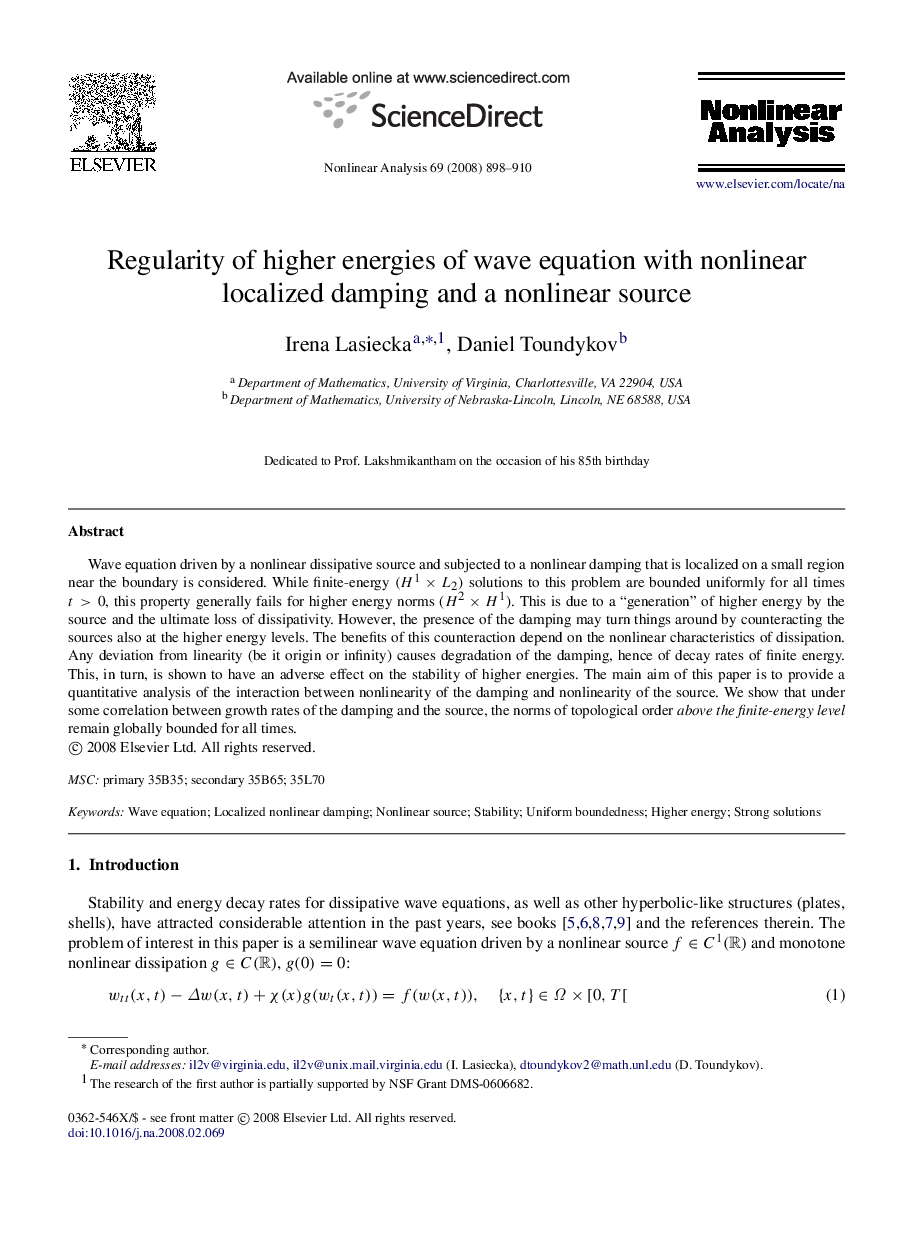| کد مقاله | کد نشریه | سال انتشار | مقاله انگلیسی | نسخه تمام متن |
|---|---|---|---|---|
| 843551 | 908558 | 2008 | 13 صفحه PDF | دانلود رایگان |

Wave equation driven by a nonlinear dissipative source and subjected to a nonlinear damping that is localized on a small region near the boundary is considered. While finite-energy (H1×L2)(H1×L2) solutions to this problem are bounded uniformly for all times t>0t>0, this property generally fails for higher energy norms (H2×H1H2×H1). This is due to a “generation” of higher energy by the source and the ultimate loss of dissipativity. However, the presence of the damping may turn things around by counteracting the sources also at the higher energy levels. The benefits of this counteraction depend on the nonlinear characteristics of dissipation. Any deviation from linearity (be it origin or infinity) causes degradation of the damping, hence of decay rates of finite energy. This, in turn, is shown to have an adverse effect on the stability of higher energies. The main aim of this paper is to provide a quantitative analysis of the interaction between nonlinearity of the damping and nonlinearity of the source. We show that under some correlation between growth rates of the damping and the source, the norms of topological order above the finite-energy level remain globally bounded for all times.
Journal: Nonlinear Analysis: Theory, Methods & Applications - Volume 69, Issue 3, 1 August 2008, Pages 898–910